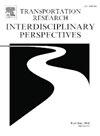降落伞和安全气囊对减少小型无人机对地面人员安全风险的影响
IF 3.8
Q2 TRANSPORTATION
Transportation Research Interdisciplinary Perspectives
Pub Date : 2025-07-01
DOI:10.1016/j.trip.2025.101521
引用次数: 0
摘要
为了降低小型无人机系统对地面人员的安全风险,其中一项缓解措施是在无人机上安装安全气囊和降落伞,在无人机失控下降的情况下,安全气囊和降落伞都会被打开。在文献中,已经开发了单独评估降落伞效果的方法。本文开发了一种方法来评估同时配备安全气囊和降落伞的无人机对地面人员构成的安全风险。对于无人机到地面的下降阶段,使用现有的模型。新颖的部分是无人机与安全气囊碰撞和相互作用对人体影响的动力学模拟。针对人体碰撞仿真,采用了无人机与人体的多体系统(MBS)模型;结合安全气囊的有限元模型。此方法适用于特定的包裹递送UAS,重量为15公斤,有或没有安全气囊的情况下。结果表明,降落伞与安全气囊的组合可以将对地面人员造成的安全风险降低一个数量级以上。与现有的单降落伞模型比较,表明该方法在考虑无人机设计和材料性能方面有较好的效果。仿真结果为进一步改进安全气囊的设计提供了有效的反馈。本文章由计算机程序翻译,如有差异,请以英文原文为准。
Effect of parachute and airbag in reducing safety risk posed by small UAS to people on the ground
To reduce the safety risk posed by small Unmanned Aircraft System (UAS) to persons on the ground, one of the mitigating measures is to equip the UAS with an airbag in combination with a parachute, both of which are deployed in case of an uncontrolled descent. In literature, methods for the evaluation of the effect of a parachute alone have been developed. This paper develops a method to assess the safety risk for persons on the ground posed by a UAS that is both equipped with an airbag and a parachute. For the descent phase of the UAS to the ground, existing models are used. The novel part is the dynamical simulation of the effect on a human body of impact and interaction of a UAS with airbag. For the human impact simulation, use is made of Multi Body System (MBS) model for the UAS and the human; in combination with Finite Element (FE) model of the airbag. This method is applied for a specific parcel delivery UAS, of 15 kg weigh, for cases with and without airbag. The results obtained show that the combination of parachute and airbag can reduce the safety risk posed to people on the ground by more than one order in magnitude. Comparison with existing models for parachute alone, show that the novel method is much better in taking UAS design and material properties into account. The paper also shows that the dynamical simulation results obtained provide effective feedback to the further improvement of the airbag design.
求助全文
通过发布文献求助,成功后即可免费获取论文全文。
去求助
来源期刊

Transportation Research Interdisciplinary Perspectives
Engineering-Automotive Engineering
CiteScore
12.90
自引率
0.00%
发文量
185
审稿时长
22 weeks
 求助内容:
求助内容: 应助结果提醒方式:
应助结果提醒方式:


